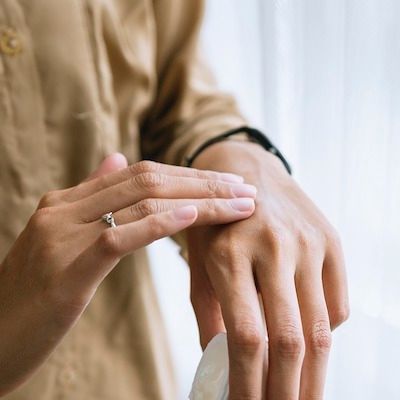News
Article
House Dust Mite Allergen Immunotherapy Effective Among Children with Atopic Dermatitis
Author(s):
This analysis was conducted to evaluate the efficacy and safety results of AIT for patients with house dust mite allergies.
Credit: Pexels

House dust mite allergen immunotherapy (AIT) may be effective especially among children with atopic dermatitis, new findings suggest, though there is an increased risk of local adverse events among those in the younger age range.1
These data resulted from new research led by Siyi You from the department of pediatrics at Sichuan University’s West China Second University Hospital in Chengdu, China. You and colleagues wrote that house dust mites are known to be the most prevalent aeroallergen and pathogenic cause of atopic dermatitis, leading to skin barrier disruption.
“...(AIT) may be the only etiologic treatment to improve the natural history of (atopic dermatitis) by applying a dose of specific allergens to stimulate adaptive immunity in the body,” You et al. wrote. “However, the effects of (house dust mite) AIT showed controversial results recently. This study aimed to investigate the effectiveness and safety of AIT for (house dust mites).”2
Background and Trial Design
The investigators conducted a systematic review in which they analyzed randomized controlled trials related to atopic dermatitis, exposure to mites, and immunotherapy. They aimed their review at studies assessing clinical efficacy that were sourced from Embase, Cochrane Library, PubMed, Web of Science, and ProQuest databases.
In terms of secondary outcomes, those evaluated by the research team included erum immunological responses, dermatology-related quality of life, and adverse events. For the purposes of expressing dichotomous and continuous variables, the team used risk ratios (RRs) and mean differences (MDs) with 95% confidence intervals (CIs).
The investigators implemented chi-squared tests and I² statistics to analyze heterogeneity, with a fixed-effects model applied when P < .1 and I² < 50%, using a random-effects model for other scenarios. Their analyses of subgroups considered a variety of different factors.
Findings on Allergen Immunotherapy
Overall, there were 14 trials included in the research team’s review, with all of these involving a total of 1,460 participants. The team’s meta-analysis demonstrated that individuals treated with AIT had superior clinical outcomes versus individuals who had not been treated with AIT (RR: 1.74, 95% CI: 1.46–2.06, I² = 0%).
In their analysis, the investigators also concluded that those given AIT had substantial improvements in their atopic dermatitis, given their dips in Scoring Atopic Dermatitis (SCORAD) index (mean difference [MD]: −6.17, 95% CI: −8.11 to −4.22, I² = 24%) as well as in their Visual Analogue Scale (VAS) scores (MD: −1.80, 95% CI: −2.27 to −1.33, I² = 45%). Dermatology Life Quality Index (DLQI) scores were also shown by the team to be superior among the AIT cohort versus those featured in the non-AIT cohort (MD: −3.25, 95% CI: −5.66 to −0.84, I² = 0%).
The investigators noted that AIT’s efficacy appeared more pronounced in sublingual immunotherapy (SLIT) as well as within the pediatric patient subgroups, compared to the results of subcutaneous immunotherapy (SCIT) and those of the adult patient subgroups. Furthermore, they found that use of medium-term and long-term AIT proved to be more useful, though not among those in the short-term subgroup of subjects.
While these findings were considered positive, the research team did note that reductions in SCORAD were not successful in reaching the minimal clinically important difference. The team added that a greater number of studies may result in more conclusive data.
Another notable conclusion of the investigators was that there were more local AEs among children (RR: 6.19, 95% CI: 2.09–18.38, I² = 0%) and individuals with disease labeled as mild to moderate in its severity (RR: 4.11, 95% CI: 1.11–15.18, I² = 0%). The research team added that these AEs were more likely linked to pediatric subjects, given that all studies in the mild to moderate severity subgroup enrolled children.
Lastly, the team reported that among children known to have allergic rhinitis and asthma, utilization of SLIT was linked to a higher local AE incidence versus those treated with SCIT. The investigators noted that this suggests a potential connection between the administration route and the presence of mild local AEs.
“In conclusion, (house dust mite) AIT might be effective in patients with (atopic dermatitis), especially in children, although a higher risk of local adverse events was suggested in children,” they wrote. “SLIT still showed greater advantages over SCIT. Therefore, more trials, especially those on SLIT with more credible data, are needed to further explore its comprehensive efficacy and safety in patients with (atopic dermatitis).”
References
- You, Siyi; Zhou, Ruixi; Ying, Junjie; Li, Shiping; Su, Xiaojuan; Mu, Dezhi. Allergen immunotherapy in patients with atopic dermatitis allergic to house dust mite: A systematic review and meta-analysis. Chinese Medical Journal ():10.1097/CM9.0000000000003017, August 22, 2024. | doi: 10.1097/CM9.0000000000003017.
- Weidinger S, Novak N. Atopic dermatitis. Lancet 2016;387:1109–1122. doi: 10.1016/s0140-6736(15)00149-x.





